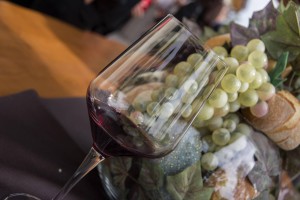The cold is an ally of good wine. In modern oenology the cold is an indispensable help to produce quality wines. It intervenes, in particular, during the various processing stages of grapes, musts, and wine. But even before entering the production, it helps to preserve quality of the grape. The grapes, carried from the field to the winery, are subjected to thermal stress, beginning to ferment and oxidize before the actual process, also creating bad smell and bad flavours. For this reason the grapes, once collected, are immediately put in cold storage, at a temperature of about 2 ° C, to avoid affecting the quality of grapes and must.
 The first stage of the wine-making process in which the cold comes into play is the one concerning cooling of the must, at 5 ° C after the pressing and before fermentation. The cold does its part in the must fermentation process, too: it is the crucial stage of the preparation of a wine for whose success a control of the temperature is essential.
The first stage of the wine-making process in which the cold comes into play is the one concerning cooling of the must, at 5 ° C after the pressing and before fermentation. The cold does its part in the must fermentation process, too: it is the crucial stage of the preparation of a wine for whose success a control of the temperature is essential.
In the stage of fermentation, the action of yeasts which transform sugars into alcohol produces a rise of the temperature of the fermenting mass, which can also reach 40 ° C.
 The management of temperature is essential, because it must be neither excessive nor too low (20-25 ° C for red wines, 16-18 ° C for white wines). Finally, the cold is also helpful for the tartaric stabilization of wines. Among the various components of the wines there are tartrates, that is to say salts of tartaric acid, which in certain conditions of concentration and temperature tend to crystallize, at the beginning forming microscopic crystals that tend over time to get bigger and eventually to precipitate to the bottom of the containers, forming the so-called ‘sediment’, which affect the clarity of the wine. To avoid this, the wine is brought under zero degrees (to be precise at a temperature between -2 and -4 ° C), and then it is left to rest in thermally insulated containers for about one week. During this time, tartrates, thanks to low temperature, crystallize and sink to the bottom. At this point, the filtering operation is carried out before the wine comes back to temperatures above zero, allowing to eliminate the tartrate crystals.
The management of temperature is essential, because it must be neither excessive nor too low (20-25 ° C for red wines, 16-18 ° C for white wines). Finally, the cold is also helpful for the tartaric stabilization of wines. Among the various components of the wines there are tartrates, that is to say salts of tartaric acid, which in certain conditions of concentration and temperature tend to crystallize, at the beginning forming microscopic crystals that tend over time to get bigger and eventually to precipitate to the bottom of the containers, forming the so-called ‘sediment’, which affect the clarity of the wine. To avoid this, the wine is brought under zero degrees (to be precise at a temperature between -2 and -4 ° C), and then it is left to rest in thermally insulated containers for about one week. During this time, tartrates, thanks to low temperature, crystallize and sink to the bottom. At this point, the filtering operation is carried out before the wine comes back to temperatures above zero, allowing to eliminate the tartrate crystals.
